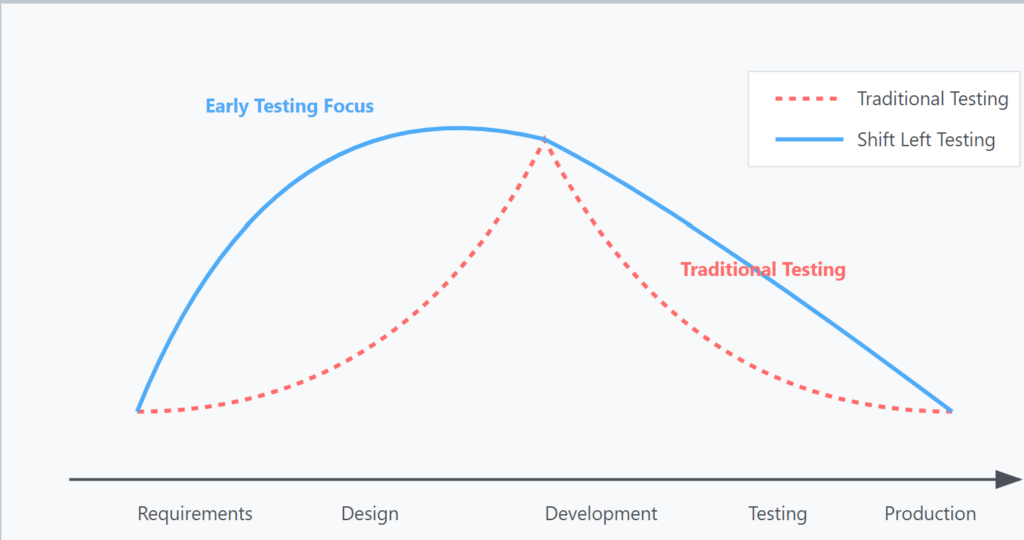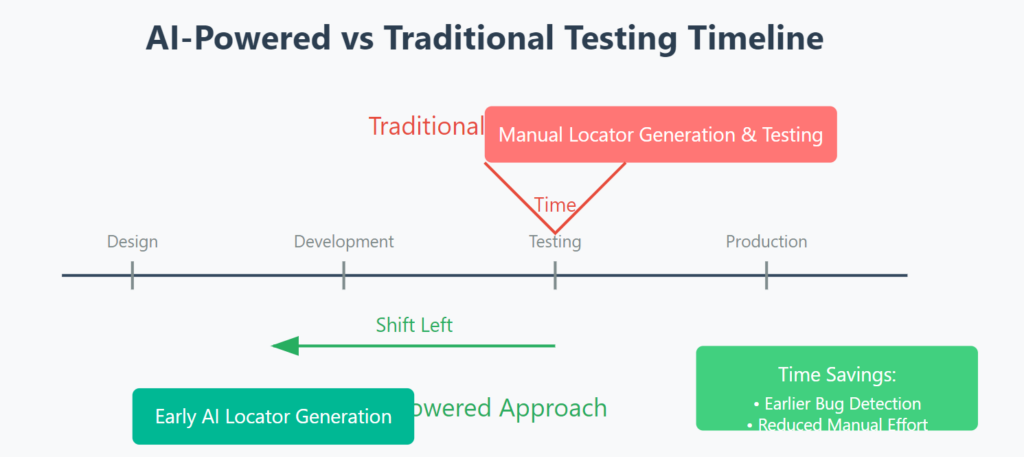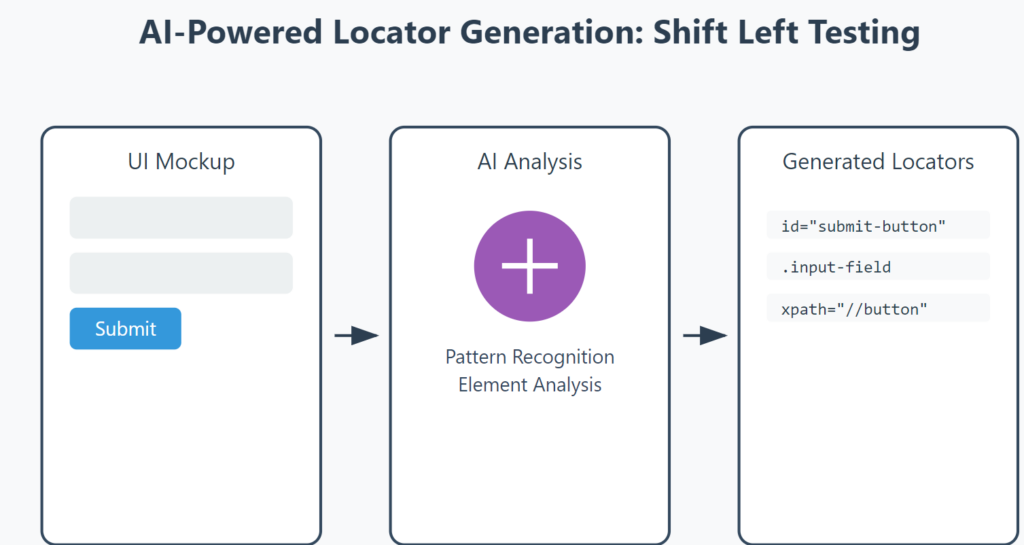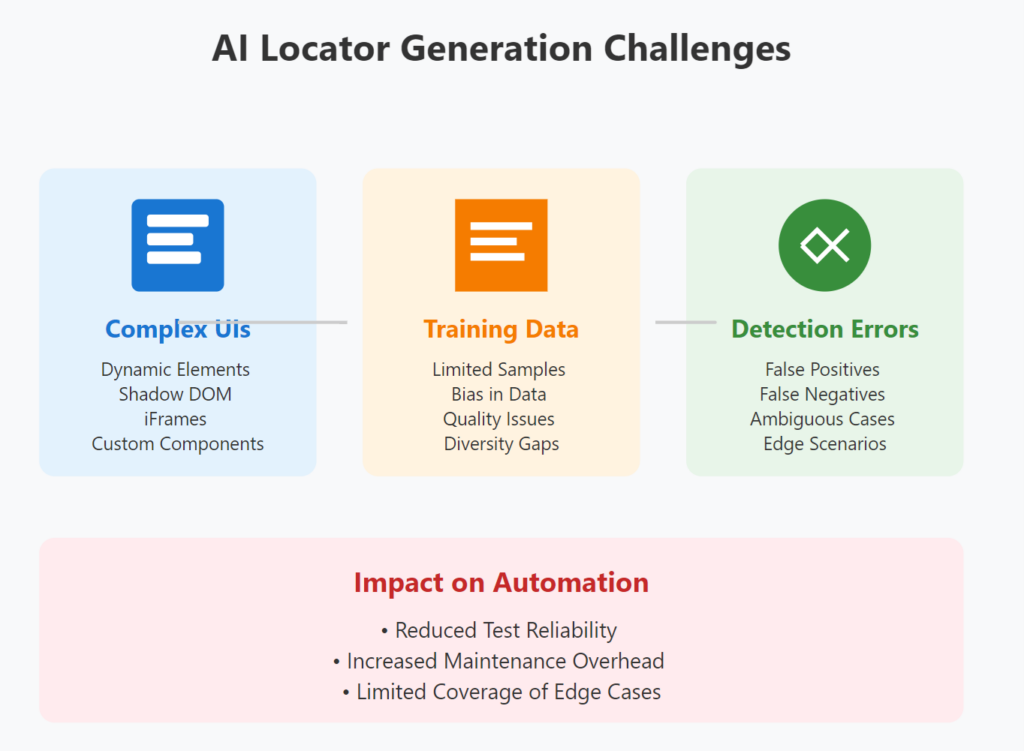Traditionally, software testing starts once the code is fully developed or in the later stages of development. With this approach, most of the development is already done, and a QA’s role in identifying defects means rework for the developers, which is quite costly in terms of time and money. It also impacts production delivery for the project.
With the introduction of Shift Left Testing, there is a significant shift in incorporating testing activities earlier in the development life cycle, starting from the design phase. This proactive strategy enables quicker detection of defects. By identifying issues early on, Shift Left Testing notably reduces the chances of rework, enhances software quality, and improves team collaboration, resulting in more efficient project delivery.
Shift Left Diagram

This diagram illustrates the concept of shift left testing with:
- Two curves showing testing effort distribution:
- Blue solid line: Shift left testing approach (earlier testing)
- Red dashed line: Traditional testing approach
- A timeline showing the software development lifecycle phases:
- Requirements
- Design
- Development
- Testing
- Production
- The diagram shows how shift left testing:
- Moves testing activities earlier in the development cycle
- Distributes testing effort more evenly
- Reduces the testing burden in later stages
- A legend to distinguish between the two approaches.
What is Shift-Left Testing?
Shift-Left Testing refers to the practice of incorporating testing activities early in the software development lifecycle (SDLC). Instead of waiting for the development phase to be completed, testing is carried in the initial stages of design and coding itself. This early involvement enables quicker feedback from QA, allowing developers to address issues before they deploy code and invest time in rework.
5 Benefits of Shift-Left Testing
- Early Detection of Defects: By identifying defects earlier, we can cut cost of defects as its faster to fix them. With current traditional approach, defects are discovered late in the process requires rework, leading to delayed product releases. Shift-Left Testing catches defects during the design or coding phases and thus helps in preventing these defects from being turned later into high priority or severity defects.
- Reduced Costs and Time: Fixing a defect in the requirements or design phase is significantly less expensive than fixing it after development or during production. By identifying issues early, Shift-Left Testing reduces the overall cost of development and speeds up the release cycle.
- Improved Collaboration Between Teams: Shift-Left Testing encourages collaboration between development and testing teams from the kickoff of the project. Testers participate in the design and coding stages, providing their insights right from the beginning and making sure to have robust end product delivery.
- Increased Test Coverage: Early involvement of testers enables them to create comprehensive test cases and scenarios from the beginning, ensuring higher coverage of the application. It also allows them to capture edge cases and scenarios that might have been overlooked if QAs not involved upfront.
- Supports Agile and DevOps Practices: Shift-Left Testing supports Agile and DevOps methodology, where continuous integration and delivery require rapid feedback loops. Automated testing frequently requires code changes which now can be easily handled by Shift Left Testing and new changes can be tested immediately. Overall, it helps in reducing the risk of integrating faulty code into production.
How to Implement Shift-Left Testing
- Incorporate Testing from the Design Phase: Engaging testers during the design phase of development itself can help in examining the requirements and pinpoint potential issues early in the process, ensuring that test cases are in sync with the functionality. This teamwork helps in minimizing ambiguity and fosters a mutual understanding of the product.
- Continuous Integration and Continuous Delivery (CI/CD): Shift-Left Testing thrives in environments with CI/CD pipelines. Each code commits triggers automated tests built using Shift Left approach, ensuring that the code is functional before it’s integrated into the main branch. This early and frequent testing helps teams detect and resolve issues faster, leading to more stable releases. This is like reducing the dependency on functional testing for later when the code is fully developed.
- Use of Early Performance Testing: Performance testing should not be reserved for the end of the development cycle. By incorporating performance testing early on, teams can identify bottlenecks and scalability issues before the system grows too complex. This proactive approach helps avoid costly redesigns and ensures the product can handle expected loads from the start.
-

QA Wolf
Visit WebsiteThis is an aggregated rating for this tool including ratings from Crozdesk users and ratings from other sites.4.8 -

NordLayer
Visit WebsiteThis is an aggregated rating for this tool including ratings from Crozdesk users and ratings from other sites.3.7 -

Intruder
Visit WebsiteThis is an aggregated rating for this tool including ratings from Crozdesk users and ratings from other sites.4.8
How AI Supports Shift Left Testing
AI-powered test automation tools, such as Tosca Vision AI, Testim, and Applitools, generate test locators directly from UI mockups, whiteboard diagrams or design files (e.g., Sketch, Figma, or Adobe XD). These tools can analyze the mockup and automatically identify key UI components such as buttons, forms, and images, and generate stable locators for these elements.

AI-Powered Locator Generation Benefits
- Early Test Automation with UI Mockups: One of the most powerful use case of AI-powered test automation is the ability to create test scripts from UI mockups before the development team has completed the actual coding of the web application. This approach enables:
- Parallel Development and Testing: Test scripts can be created and executed as soon as the UI design is finalized, allowing QA teams to start testing before the final product is ready.
- Faster Time to Market: Since test scripts are prepared earlier, QA teams can provide rapid feedback on the application’s design, reducing the time to market.
- Test Automation in Continuous Integration/Continuous Delivery (CI/CD): In a CI/CD pipeline, test automation is crucial for continuous testing. AI-powered tools can generate locators on the fly, making it easier to keep up with frequent code changes and UI updates. This is especially helpful in agile development environments where:
- Frequent UI Changes: Traditional test automation scripts may break as UI elements frequently change in an agile development environment. AI-generated locators help make test scripts more resilient to these changes.
- Reduced Test Maintenance: Since AI tools can adjust locators based on visual recognition, the maintenance burden of updating test scripts when minor UI changes occur is reduced.

- Cross-Browser and Cross-Device Testing: Web applications need to work seamlessly across different browsers and devices. AI-powered tools ensure that locators generated from mockups work consistently across various platforms without requiring separate scripts for each browser or device.
How Does it Work?
- Input UI Mockup: Testers provide a mockup or design file that visually represents the web page or application interface.
- AI-Powered Analysis: The AI engine analyzes the mockup and identifies the visual elements—buttons, text fields, drop-downs, images, etc.—using image recognition and machine learning algorithms.
- Generate Locators: Based on the analysis, the AI tool automatically generates locators (XPath, CSS selectors) for each web element.
- Create Automated Test Scripts: Once the locators are generated, the AI tool can either create a complete test script or allow testers to integrate the locators into their existing automation frameworks.
Challenges of AI-Powered Locator Generation
While AI-powered locator generation offers numerous benefits, there are some challenges to consider:
- Complex UIs: It’s difficult to identify web locators needed for Test Automation on dynamic user interfaces for AI tools and its mostly requires manual intervention to refine locators.
- Training Data Limitations: The accuracy of AI models depends on the quality and quantity of the training data; the more training data we have the better model accuracy would be.
- False Positives/Negatives: AI tools can incorrect locators leading to false positives requiring manual intervention to ensure accuracy.

Takeaways
Shift-Left Testing is today’s transformative approach to improve software quality and reduce defects cost. By integrating testing activities earlier in the SDLC, teams can detect and fix defects earlier, collaborate more effectively, and hence deliver more reliable software to users.
The practice is well-suited to modern development methodologies like Agile and DevOps, where continuous testing and rapid feedback are essential. Also, AI-powered test automation tools that generate web element locators from mockups are very useful in Shift Left testing strategy.
Subscribe to The CTO Club's newsletter for more software testing tips, tools, and best practices.







